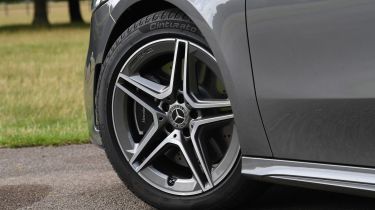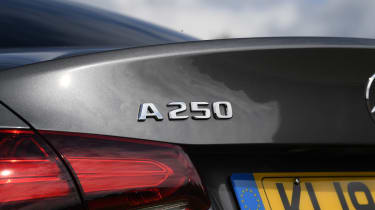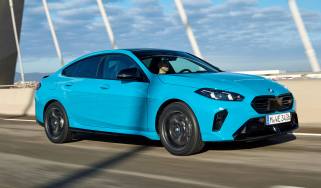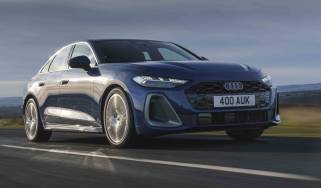Mercedes A-Class saloon - Engines, drive & performance
Mercedes has prioritised comfort, so the Audi A3 saloon feels sharper than the A-Class
The A-Class saloon is longer than the hatchback, but its chassis is near-identical and this is reflected in the driving experience. Older versions of A-Class were criticised for being too stiff and Mercedes has clearly been careful not to make the same mistake again. The A-Class saloon is certainly comfortable, but as a result it also doesn't feel quite as sharp to drive as an Audi A3 saloon or BMW 2 Series coupe.
It really comes into its own on the motorway, though, and long-distance drivers will love the smooth, calming ride. Its excellent aerodynamics help here, too, because the saloon smooths airflow so well that wind noise is noticeably reduced, boosting refinement to Mercedes C-Class levels.
You can also tighten up the driving experience by going for any of the models in AMG Line trim, which still rides well on 18-inch alloy wheels (AMG Line Premium Plus models go up to 19 inches), but offers handling we doubt the Mercedes C-Class could beat. Even on soaking wet roads it feels stable and secure, even if the steering is still lacking feel.
Mercedes A-Class saloon diesel engines
With the entry-level, 114bhp A 180 d now dropped, there’s just one diesel model in the range. That’s the A 200 d, its 2-litre engine producing a useful 148bhp and a 320Nm chunk of torque throughout a fairly large portion of the rev range. It’s more than sufficient to deliver good everyday performance, with 0-62mph coming up in 8.4 seconds, and a 141mph top speed resulting in long motorway legs and relaxed 70mph cruising.
Petrol engines
Introduced especially for the A-Class, the 1.3-litre turbocharged petrol engine is used in the 134bhp A 180 and 161bhp A 200 models. The extra power of the A 200 reduces the 0-62mph time from 9.3 to 8.3 seconds. That's impressive on-paper performance for such a small engine, aided by quick gearchanges from the optional seven-speed automatic, but driving enthusiasts may be disappointed. The A 200 can feel strained and gets quite vocal if pushed, so it's better suited to those with a light right foot. That's even more the case for the A 180; it feels a bit weedy in reality, so we'd only recommend the A 180 to urban drivers with a fairly low annual mileage.
For A 250 versions, the size of the turbo petrol engine increases to 2.0-litres, making it feel a lot more muscular at higher speeds. The A 250 can get from 0-62mph in 6.2 seconds and has a top speed of 155mph. With 221bhp, not only does the A 250 have plenty of punch but it's also smoother than the 1.3-litre and its seven-speed automatic works well.
Hybrid engine
Mercedes A-Class saloon buyers can also choose a plug-in hybrid, badged A 250 e. Its 215bhp output makes it the second most potent model in the range, and its 7.5-second 0-62mph time is quick too. Even in electric mode it’ll go up to 87mph, but with the petrol engine running the top speed rises to 143mph. It has an eight-speed automatic gearbox, which can be quite jerky and unrefined to use, but the handling is secure and accurate enough for a car of this type.
Which Is Best?
Cheapest
- NameA180 Sport Executive 4dr Auto
- Gearbox typeSemi-auto
- RRP£32,950
Most Economical
- NameA250e AMG Line Executive 4dr Auto
- Gearbox typeSemi-auto
- RRP£41,650
Fastest
- NameA250e AMG Line Executive 4dr Auto
- Gearbox typeSemi-auto
- RRP£41,650
















